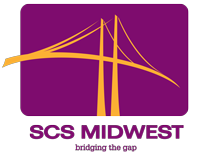Read Our White Paper
Our Unique Process:
Why would appraisal reviewers need to be good facilitators? Why are people skills so important during the appraisal review process? Appraisers are bound to USPAP. The purpose of the Uniform Standards of Professional Appraisal Practice (USPAP) is to protect the overall public trust. An integral part of earning public trust is to be good to one another by respecting one another and listening. We have an obligation to the public, peers, colleagues, and clients alike to treat each well during the review process.
In most cases this occurs naturally and with a great degree of professionalism, but there are some instances where we can do much better. The average licensed appraiser has spent many, many years establishing an appraisal career through a plethora of education and experience. Wouldn’t it be better to uphold and encourage one another, even in the midst of disagreement? We could instill and uphold further public confidence in our profession by our ability to work with one another…..appraisers, review appraisers, and clients together. We could be examples for the public at large on how to actively problem solve tough valuation issues and get it done effectively for our clients. This would instill more confidence in our clients and be attractive to future persons considering our industry.
I recently met with a prospective new client and it was immediately clear why they had reached out for assistance. According to credit policy, this particular lending institution had ordered an appraisal report which subsequently went to a third party reviewer. That’s where the fireworks began. There were some minor typographical errors and a potential valuation issue from the standpoint of the reviewer. Numerous phone calls and e-mails ensued between the appraiser and reviewer. Several days passed and the bank got call from the appraiser about how difficult the situation had become and it was still unresolved. It was important not to place undue pressure on the appraiser, but the reviewer also needed to be comfortable with the end result……comfortable enough to place his or her name in that certification. What could the client do? They needed to close and had no accepted appraisal report for underwriting. Why?
What could have been done differently to avoid the situation and facilitate the review process, resulting in an appraisal report that was USPAP and FIRREA compliant and with an accurate value indication for the client?
How to provide the best service to the client:
- Accuracy. Are the issues that you may have with the report material to the overall valuation and would any subsequent changes directly affect the market value or overall quality of the report? Carefully consider the changes that you ask for prior to communicating them to the appraiser. The client may wish to simply have typos noted in the review and a simple statement such as “The typo is very minor and does not materially affect overall valuation results”. This consideration is obviously client specific.
- Means of Communication. Phone call vs. e-mail or text? We are in an age where person to person communication is becoming a lost art, but some situations warrant person to person contact. If the issue might be a pure matter of opinion, (cap rates, discount rates), might a phone call be more prudent? Often the tone of a conversation cannot be ascertained from an e-mail or text. Quite often, the tone in an e-mail can be misconstrued if not carefully constructed, often initiating an immediate defensive response. Although appraisers tend to be effective with written communication skills, this is being challenged in our society. Choose our means of communication with the appraiser and client carefully, depending upon the situation. Do we possess the soft skills to effectively navigate a facilitation process which yields beneficial results for our client?
- Tone. How do I communicate my concerns effectively in a manner which is respectful? How do I put the recipient at ease and establish amicability and teamwork geared towards problem resolution? Sometimes it’s not what we say, rather how it is presented.
- Positivity first. The appraiser has put many, many hours into the appraisal report and there are many good things in the report. Secondly, the bank has gone a long way to try and put a deal together which will make the bank successful and result in a transaction. Don’t be afraid to discuss the middle ground. What is the middle ground? Is it a range that would fit within market data and be perfectly acceptable? Remember that positivity is contagious and can result in a positive outcome for everyone involved.


